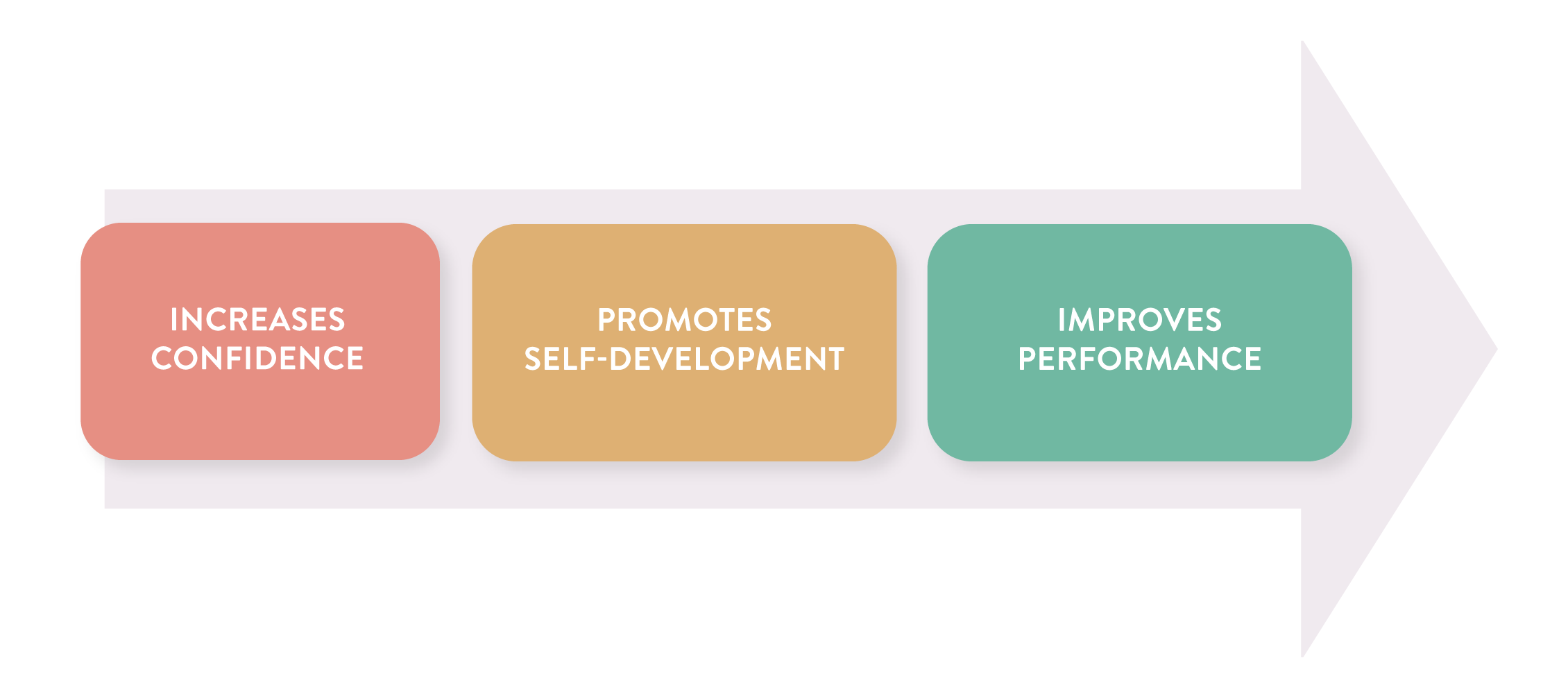If you struggle to give feedback to your employees, you’re not alone; some 37% of managers find it hard to give feedback to workers about their performance.
In part two of our essential guide series to professional development, we're talking about feedback — what it is, why it’s important, and how to provide it effectively.
As with our previous blog post in this primer series, this blog was written in collaboration with Industrial/Organizational Psychology Masters students at Central Michigan University. The goal of this series is to provide you with the same expertise that in-house I/O Psychologists provide Fortune 500 companies like AT&T, PepsiCo, and Starbucks.
What is Feedback?
Feedback includes helpful information or criticism about prior action or behavior from an individual communicated to another individual (or group) who can use that information to adjust and improve subsequent actions and behaviors. Feedback presents its own implementation strategies and benefits.
Improvement is most likely when:
-
Change is necessary
-
Recipients evaluate feedback as enjoyable and valuable
-
Recipients perceive a need to change their behavior
-
Recipients react positively to the feedback
-
Recipients believe change is feasible
-
Management set goals that are challenging but achievable
The Benefits of Feedback
Improved motivation. Strength-based feedback (as opposed to weakness-based feedback) highlights positive achievements and can motivate people to initiate self-development by continuing to seek out additional feedback.
Increased employee confidence. By giving feedback, people become more confident in their abilities to perform their job.
Improved performance. Feedback, especially positively received feedback, can improve performance as much as 50%. However, feedback must be applicable to the job and provide clear goals to work towards.
Improved individual engagement. Employees receiving feedback felt 38% more connected to the organization compared to employees not receiving feedback. These individuals’ feeling of connectedness improved performance by 31%.
Development and Performance

How to Optimize Your Feedback
Now that we understand why consistent feedback is so important in your organization, let’s explore the factors that affect the effectiveness of feedback.
Timing of Feedback
Feedback provided immediately before performing a task has a larger impact on performance than providing feedback when it is not immediately followed by performing the task. For example, providing feedback at the beginning of the day will likely have a larger impact on that day’s performance, whereas providing feedback at the end of the working day will not be as influential on the following day’s performance.
Receiver of Feedback
For high performers, feedback involving how the employee compares to other workers (social comparison feedback; e.g. “here’s how you performed on this project versus so-and-so”) improved performance to a greater degree than feedback informing them of objective performance (objective feedback; e.g. “you completed 3 tasks”).
For low performers, objective feedback improved performance to a greater degree than social comparison feedback.
Source of Feedback
Individuals are more satisfied with their feedback when it is provided by someone knowledgeable about the job. Indeed, feedback from direct reports and supervisors increased performance by 7%. Feedback from peers or self-provided feedback had a negligible impact on performance.
Feedback Type
Strength-based feedback (i.e., positive feedback) was related to increases in the employee’s belief that they can complete their work (self-efficacy) and an increase in their positive emotions, whereas weakness-based feedback (i.e. negative feedback) had the opposite effect. However, when negative feedback is necessary, the negative response can be attenuated by providing support and inducing a belief that their abilities can be improved.
Positively-worded feedback is preferred over corrective feedback. However, presenting feedback with the sequence of Corrective-Positive-Positive was preferred best over alternative methods.
Feedback Location
Employees improved their safety behaviors by about 17% to 22% when their safety performance scores were posted in a public space, likely due to the motivating strategy of social comparison. However, employees receiving public feedback also reported 13% higher negative emotions and 12% higher intentions to quit than employees receiving private feedback.
Employees receiving negative feedback in public reported 8% higher negative emotions than employees receiving negative feedback in private.
Combining Feedback with Goal-Setting
Combining goal-setting and feedback increased performance by 30% when compared to goal-setting alone. This effect was stronger for complex tasks (45% improvement) vs. simple tasks (22% improvement).
Although these feedback methods are proven to be effective to the average employee across an organization, it's important to keep in mind that effective development techniques for your high-potential (HiPo) employees will look different. In our next blog post, we’ll take a deep dive into why you should and how you can provide professional development for your HiPo employees.